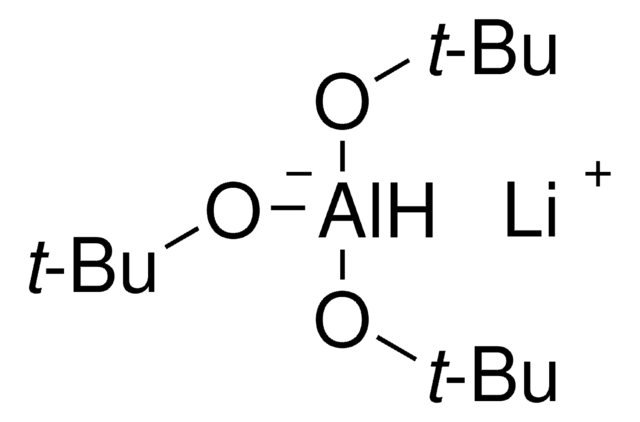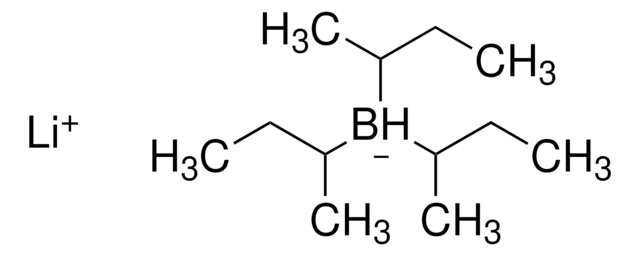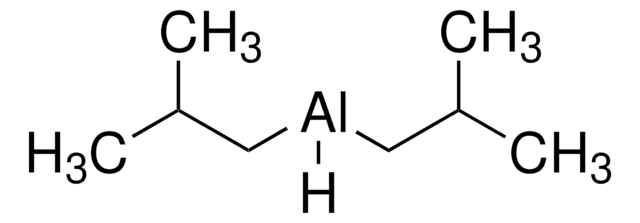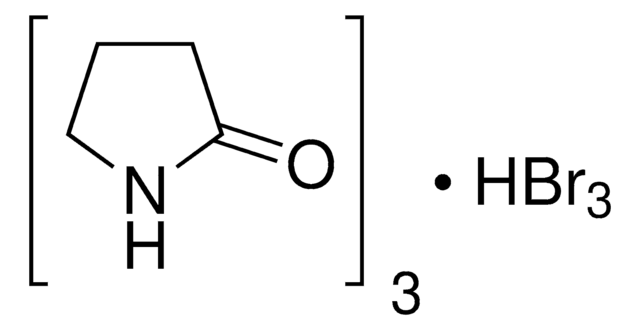Wichtige Dokumente
196193
Red-Al® Natrium-bis(2-methoxyethoxy)aluminiumhydrid -Lösung
≥60 wt. % in toluene
Synonym(e):
Natrium-bis-(2-methoxy-ethoxy)-aluminium-dihydrid, Natrium-dihydrido-bis-(2-methoxyethoxy)-aluminat -Lösung, SDMA
About This Item
Empfohlene Produkte
Dampfdruck
21 mmHg ( 20 °C)
Qualitätsniveau
Expl.-Gr.
7 %
Eignung der Reaktion
reagent type: reductant
Konzentration
≥60 wt. % in toluene
Dichte
1.036 g/mL at 25 °C
Funktionelle Gruppe
ether
SMILES String
[Na+].[H][Al-]([H])(OCCOC)OCCOC
InChI
1S/2C3H7O2.Al.Na.2H/c2*1-5-3-2-4;;;;/h2*2-3H2,1H3;;;;/q2*-1;2*+1;;
InChIKey
XJIQVZMZXHEYOY-UHFFFAOYSA-N
Allgemeine Beschreibung
- Aldehydes, ketones, esters, and anhydrides to primary alcohols.
- Ketoximes and aldoximes to primary amines.
- Cyclic compounds such as lactones and epoxides to diols.
It is also used as a catalyst in the ring-opening polymerization reactions.
SBAH is a reducing agent used to reduce functional groups like carbonyls, amides, epoxides, esters, and carboxylic acids.
Anwendung
- A tosyl deprotecting agent.
- A catalyst for crosslinking of polyvinylsilanes (PVS) by Si-Si dehydrocoupling reaction in the presence of group 4 metallocene complexes.
- A reducing reagent for the synthesis of optically active N-protected amino alcohols and peptide alcohols.
Rechtliche Hinweise
Signalwort
Danger
Gefahreneinstufungen
Aquatic Chronic 3 - Asp. Tox. 1 - Eye Dam. 1 - Flam. Liq. 2 - Repr. 2 - Skin Corr. 1B - STOT RE 2 Inhalation - STOT SE 3 - Water-react 1
Zielorgane
Central nervous system
Zusätzliche Gefahrenhinweise
Lagerklassenschlüssel
4.3 - Hazardous materials which set free flammable gases upon contact with water
WGK
WGK 3
Flammpunkt (°F)
39.2 °F - closed cup
Flammpunkt (°C)
4 °C - closed cup
Hier finden Sie alle aktuellen Versionen:
Besitzen Sie dieses Produkt bereits?
In der Dokumentenbibliothek finden Sie die Dokumentation zu den Produkten, die Sie kürzlich erworben haben.
Kunden haben sich ebenfalls angesehen
Artikel
Red-Al®, or sodium bis(2-methoxyethoxy)aluminum dihydride (Vitride®, SMEAH), is a versatile reducing agent and a good substitute for LiAlH4 in many reactions. Red-Al® is nonpyrophoric, although still moisture-sensitive, and is available in solution, allowing for easier handling compared to LiAlH4.
Unser Team von Wissenschaftlern verfügt über Erfahrung in allen Forschungsbereichen einschließlich Life Science, Materialwissenschaften, chemischer Synthese, Chromatographie, Analytik und vielen mehr..
Setzen Sie sich mit dem technischen Dienst in Verbindung.













